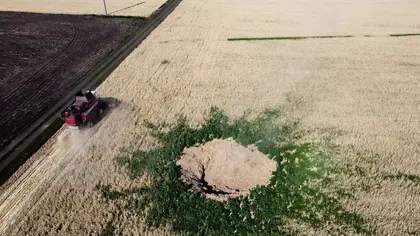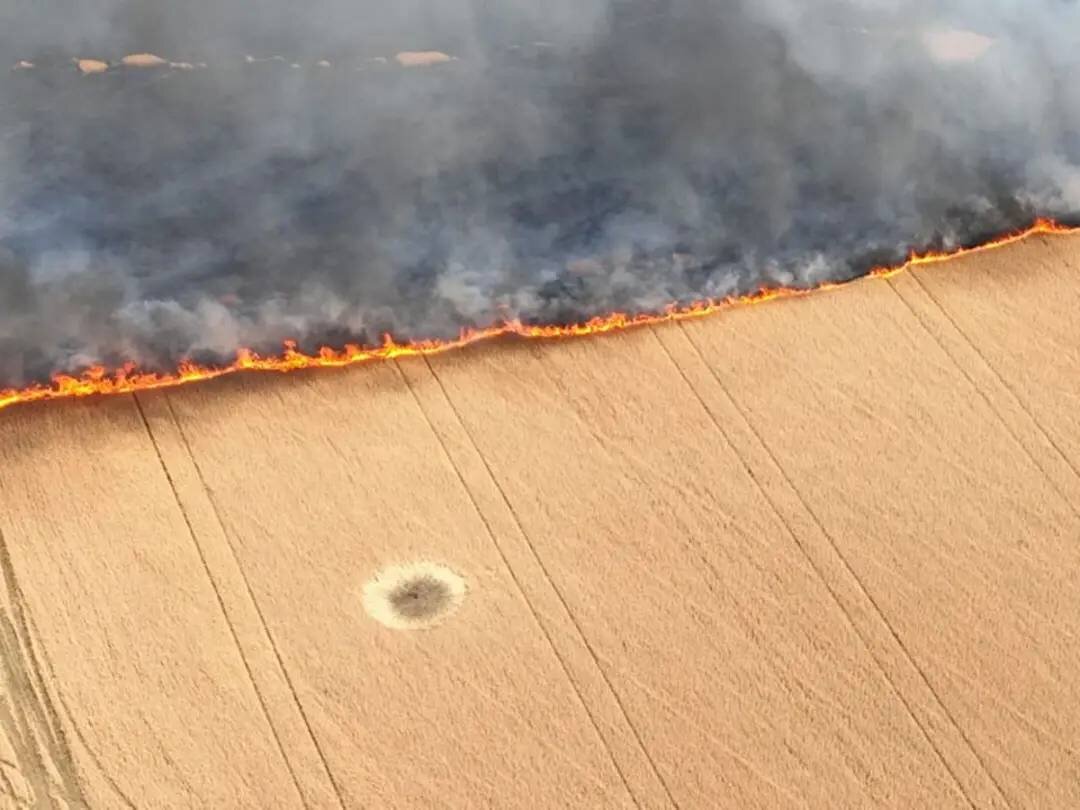Ukrainian farmers have brought in the first million tons of the new harvest, Ukraine’s Ministry of Agrarian Policy and Food announced on Friday, July 8. Most regions of Ukraine have begun harvesting early.
According to the Dilo newspaper, as of July 8, farming enterprises had gathered 1.1 mln tonnes of grain and legumes from 417,300 hectares, including 147,900 ha of winter wheat. The Ukrainian Grain Association projects a grain crop of 69.4 mln tonnes and envisages exports of 31.5 mln tonnes.
Harvesting is a brave feat considering that Russian troops have now occupied close to 22% of Ukraine’s agricultural land, according to NASA Harvest satellite images tweeted by NEXTA.
Harvesting operations are not without obstacles. Some fields could not be seeded due to the presence of land mines and artillery fallout, while other winter and spring crops have already been lost to occupation.
“The 2022 harvest is going to be significantly smaller. A significant part of the south, where the crops are good, is occupied”, Ukrainian Farming Union head Ivan Tomych told IUA TV. “The central regions will have a much smaller crop due to the dry conditions. According to farmers from the central regions, the harvest is half of what it was last year.”
Meanwhile, the Russian occupiers have been carrying out a campaign to deliberately destroy Ukraine’s grain production capacity by occupying agricultural land, destroying grain storage facilities and mining fields, Dilo reported. The US State Department added, “Russian forces are plundering and destroying Ukrainian agricultural infrastructure, including silos, farming machinery and fields.”
Kherson Regional police reported that the Russians have destroyed agricultural equipment and grain storage facilities and are shelling fields retaken by the Ukrainian army causing fires, The Page reported on July 9. According to the National Police, several hundred hectares of wheat, barley and other grain have been burned.
“In order to save some of the crop, people are working on equipment alongside a wall of fire,” the National Police reported.
“Ukrainian farmers are trying to save the crop which the occupiers are intentionally burning and destroying. Ukrainians are fighting and giving their lives not only for their independence but also to feed the world,” Volodymyr Omelyan, a former Infrastructure Minister, tweeted.
The Russian navy continues to block Ukraine’s southern ports, stalling Ukraine’s grain exports. Up to 20 million tonnes are reportedly blockaded in Ukrainian ports. At the same time, the occupiers have been stealing Ukraine grain and trying to resell it at bargain prices.
RFE/RL reported on July 4 that Turkey stopped a Russian-flagged cargo ship, the Zhibek Zholy, and were investigating Ukraine’s allegations that it was carrying 7,000 tonnes of grain stolen from Berdyansk in Zaporizhzhia Region. Days later, Turkey released the ship.
“We regret that a Russian ship, Zhibek Zholy, which was full of stolen Ukrainian grain, was allowed to leave Karasu port despite criminal evidence presented to the Turkish authorities,” said the foreign ministry spokesperson Oleh Nikolenko. “Turkey’s ambassador in Kyiv will be invited to Ukraine’s ministry of foreign affairs to clarify this unacceptable situation.”
Meanwhile, the war has driven up wheat prices. Jumping in February they peaked around $11/bushel in May, the U.S. Department of Agriculture reported. Prices have started to ease. Wheat averaged $10.75/bu by June 10, according to the USDA. US wheat futures fell below $10 on July 4, their lowest since February. It is still almost double the $5.34/bu reached on July 8, 2020, reported Macrotrends.
The UN Food and Agriculture Organization (FAO) attributes the price decline to new harvests in the northern hemisphere, improved crop conditions for major producers and increased yields in Russia.
Maximo Torero Cullen, Chief Economist for FAO cautions that “the factors that drove global prices high in the first place are still at play” including “a strong global demand, adverse weather in some major countries, high production and transportation costs, and supply chain disruptions due to Covid-19, compounded by the uncertainties stemming from the ongoing war in Ukraine.” For example, India cut wheat exports in May and has now restricted flour exports, BBC news reported.
As for what will happen to wheat prices for the rest of 2022, according to Food Dive, Kenneth Scott Zuckerberg, lead economist for CoBank, will be keeping an eye on five key factors. Namely, grain exports from Ukraine and Russia, U.S. crop progress, influential weather patterns, any switching of crop acreage in the U.S. and the macro global economic environment.
You can also highlight the text and press Ctrl + Enter








Comments (0)